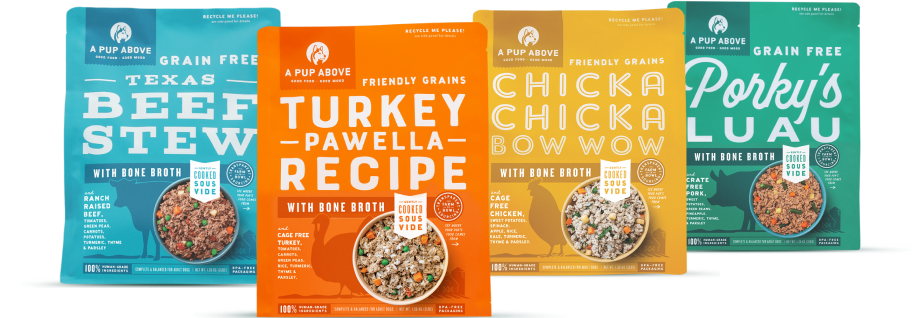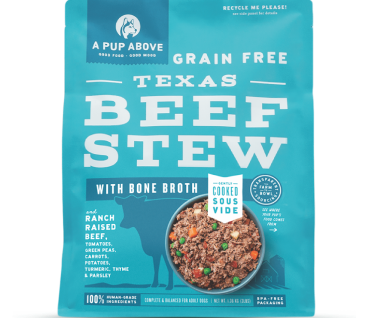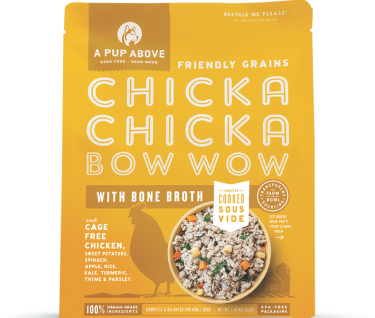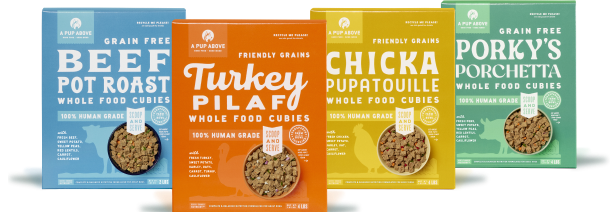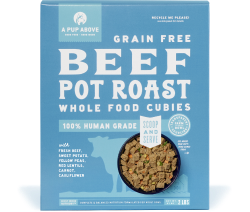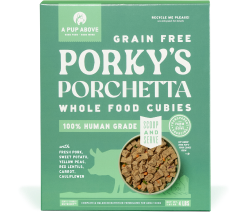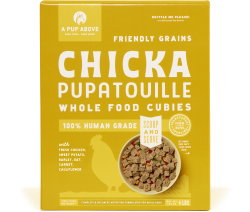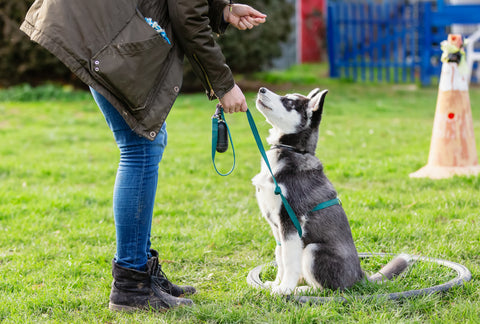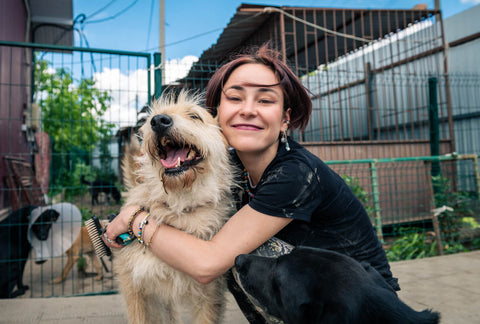
Exploring the aisles of pet stores, you've likely encountered rawhide, a popular choice among dog chews. It's a product shrouded in both popularity and debate, raising questions about its safety and benefits for our furry companions.
At A Pup Above, while we focus on crafting nutritious, human-grade meals for dogs, we also understand the importance of overall canine health, which includes what they chew on. In this guide, we'll unravel the mystery of rawhide, from its origins to why dogs can't seem to resist it, ensuring you're informed about what's best for your pup's health and happiness.
What Is Rawhide, Exactly?
Rawhide is more than just a dog chew — it's a by-product of the leather industry, made from the inner layer of cow or horse hides. After being separated from the outer layer, the hide is cleaned and processed to remove hair and any remaining flesh. The process doesn't end there; it's further cut, shaped, and sometimes flavored to become the rawhide chews seen in pet stores.
These chews come in various forms, including bones, rolls, and twists, catering to dogs of all sizes. The primary distinction lies between the softer, more digestible inner layer and the tougher, durable outer layer, each offering different chewing experiences and durations.
Why Do Dogs Love Rawhide?
The allure of rawhide chews to dogs is multifaceted, driven by their natural instincts and the benefits these chews offer:
- Texture and Taste: The hard, chewy texture of rawhide satisfies a dog's innate desire to chew, providing a taste and experience that many dogs find irresistible.
- Dental Health: Chewing on rawhide is often touted for its ability to help reduce tartar and plaque buildup on a dog's teeth, contributing to overall dental health.
- Behavioral Satisfaction: Chewing is a natural behavior for dogs, offering psychological benefits such as stress relief and boredom prevention. Rawhide chews provide an outlet for this chewing instinct.
- Variety for All Ages: Whether for small dogs with less powerful jaws or adult dogs that are heavy chewers, rawhide comes in forms that suit every size and strength, making it a versatile choice for pet parents.
What Are the Risks Associated With Rawhide?
While rawhide continues to be a popular choice for many dog owners, it's important to be aware of the potential risks it carries. The dangers range from immediate concerns like choking hazards to more severe, long-term health issues:
- Choking and Intestinal Blockage: One of the most significant risks of rawhide is the possibility of a dog choking on large pieces that are bitten off. Furthermore, these large chunks can cause intestinal blockage if swallowed, leading to serious digestive issues and potentially life-threatening situations.
- Chemical Treatments and Preservatives: The journey from hide to chew involves various chemical treatments aimed at cleaning and preserving the rawhide. Chemicals such as bleach and hydrogen peroxide, among other toxic substances, are commonly used, posing risks of bacterial contamination and exposure to harmful residues that can affect a dog’s health.
These concerns highlight the need for pet parents to closely monitor their dogs with rawhide chews and consider safer, less risky alternatives for their chewing pleasure.
What Are Some Safer Alternatives to Rawhide?
Acknowledging the risks associated with traditional rawhide chews leads many pet parents to seek safer, healthier alternatives for their dogs.
Here are some vet-recommended alternatives that ensure your dog can enjoy chew time worry-free:
Bully Sticks
Bully sticks are fully digestible and less likely to cause blockages compared to rawhide. They still offer the hard, chewy texture dogs love, supporting dental health by reducing tartar buildup.
Dental Chews
Specially designed dental chews are engineered to clean teeth and freshen breath as your dog chews. These often contain ingredients that help minimize tartar and plaque without the risks of choking and blockage.
Antlers and Horns
Deer, elk, and bison antlers provide a long-lasting, natural chew option for dogs. They're rich in minerals and free from the chemicals and preservatives found in rawhide. However, pet parents should choose antlers that match their dog’s size and chewing style to avoid dental issues.
Natural Chew Toys
Durable rubber or nylon toys, such as Kongs, are excellent for vigorous chewers. They can be stuffed with healthy treats or dog food, providing mental stimulation as well as dental benefits. Plus, they're safe for the dishwasher, making them easy to clean and maintain. But keep an eye on your dog as they chew to ensure they don’t break off or swallow any rubber pieces.
Vegetable-Based Chews
Innovative, vegetable-based chews are emerging as a popular rawhide alternative. These are often made from ingredients like sweet potatoes or carrots, providing a safe and digestible option for dogs to gnaw on.
Selecting the Right Chews for Your Dog
Choosing the right chews for your dog goes beyond simply picking up anything labeled "safe for dogs" off the pet store shelf. It requires a thoughtful consideration of your dog's specific needs, preferences, and health considerations.
Just as we meticulously craft our meals like Texas Beef Stew to meet the nutritional needs of your pups, selecting chews should be approached with the same level of care and attention to detail.
Here's what to keep in mind:
Understand Your Dog's Chewing Style
Dogs have unique chewing styles. Some are gentle and nibble on their chews, while others are aggressive, attempting to devour chews as quickly as possible. Select chews that align with your dog's chewing behavior to reduce the risk of choking and ensure the chew lasts longer.
Consider Size and Age
The size and age of your dog significantly influence the type of chews that are safe and appropriate. Small dogs and puppies will need smaller, softer chews they can easily manage, while larger breeds can handle more robust options. Always ensure the chew is large enough to prevent accidental swallowing.
Look for Natural Ingredients
Just as natural, human-grade ingredients are crucial for your dog's diet, they're equally important in chews. Seek out chews made from natural, digestible materials free from harmful chemicals, preservatives, and additives. Natural chews can complement a diet of fresh, nutritious meals, ensuring your dog's overall health and well-being.
Inspect for Safety and Quality
Always inspect chews for any potential safety hazards, such as sharp edges or easily breakable pieces that could lead to intestinal blockages or other health issues. Opt for products from reputable brands that adhere to high-quality standards.
Consult Your Veterinarian
When in doubt, your veterinarian is a valuable resource for recommendations on suitable chews based on your dog's health history, dietary needs, and size. They can offer guidance on what to avoid and suggest alternatives that might be beneficial for your dog's dental health or digestive system.
A Final Word
Navigating the world of dog chews, especially when it comes to rawhide, can be complex. But armed with knowledge and a discerning eye, you can make choices that ensure your dog’s safety and enjoyment.
At A Pup Above, our commitment extends beyond just mealtime to every aspect of your dog's health and happiness. While we specialize in creating delicious, human-grade meals, we also recognize the importance of safe chewing alternatives. By opting for healthier, safer options, you’re not just avoiding risks; you’re enhancing your dog’s well-being with every bite and chew.
Remember, the best decisions for your furry friend come from a place of love, care, and informed consideration. Let’s continue to prioritize their health, one chew and one meal at a time, ensuring they live the happy, fulfilling lives they deserve.
Sources:
Rawhide Definition & Meaning | Britannica Dictionary
Are Rawhide Chews Dangerous for Dogs? | American Kennel Club (AKC)
Is Rawhide Bad For Dogs | Guide Dog
Dog Dental Treats: Safety & What to Look For | American Kennel Club

